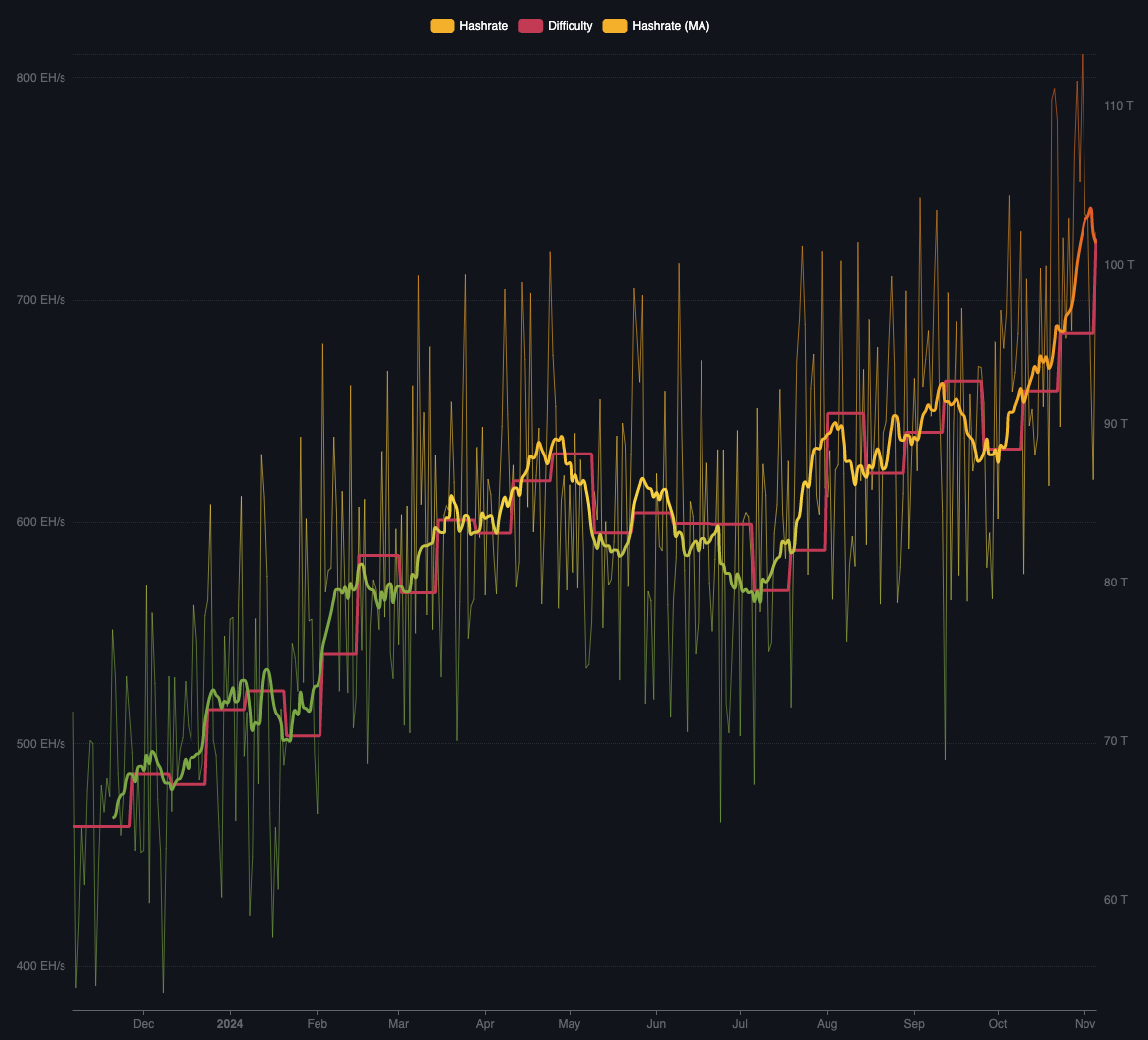Bitcoin mining difficulty breaks through 100 trillion for the first time
Quick Take Bitcoin mining difficulty jumped 6.2% to hit an all-time high of more than 100 trillion on Tuesday. The positive adjustment comes after the Bitcoin network reached a record seven-day moving average hash rate of over 750 EH/s last week.

Bitcoin mining difficulty rose 6.2% on Tuesday to breach the 100 trillion level for the first time following a record average hash rate for the network.
The difficulty adjustment came at block height 868,896, reaching a record of 101.7 trillion, according to blockchain explorer Mempool — exceeding the prior high of 95.7 trillion set just two weeks ago.
Bitcoin mining difficulty is not expressed in specific units. It is a relative measure of how hard it is to mine a new block compared to the easiest it could ever be. The difficulty automatically adjusts every 2016 blocks — roughly two weeks — to ensure that, on average, a new block is found every 10 minutes, regardless of how many miners are actively mining.
Ahead of Tuesday’s adjustment, Bitcoin’s blocks were being mined at the faster-than-average rate of one block every nine minutes and 27 seconds, according to Clark Moody’s dashboard .
The higher the difficulty, the more computational power and energy a miner needs to find the right hash for the next block. When there’s an increase in the number of miners, the difficulty of mining bitcoin rises. Conversely, if there is a decrease in the number of miners competing to find new blocks, the protocol lowers the mining difficulty, making it easier for the remaining miners to discover blocks.

Bitcoin mining difficulty. Image: Mempool .
Bitcoin network hash rate exceeds 750 EH/s
Last week, Bitcoin's hash rate, which measures the total computational power dedicated to the network by miners, reached a new seven-day moving average all-time high of 755.5 EH/s — exceeding the 750 EH/s level for the first time, according to The Block’s data dashboard .
Following Bitcoin’s fourth halving event on April 20, which saw block subsidy rewards halve from 6.25 BTC to 3.125 BTC, bitcoin miners saw a substantial decline in revenue. Earnings fell from a seven-day moving average peak of $72.4 million on the day of the event to the $25 to $35 million range since — squeezing out less efficient miners from the market.
"Miners operating at high electricity cost of over 6 cents kWh and lower efficiency machines are being pushed into negative profitability territories," Luxor Technology COO Ethan Vera told The Block.
The impact is also reflected in Bitcoin’s hash price falling to all-time lows of $0.04 in September, though this has since recovered slightly to $0.045. Hash price refers to the expected value of 1 TH/s of hashing power per day, quantifying how much a miner can expect to earn from a specific amount of hash rate.
However, bitcoin miners appear to be collectively ramping up their hash power since bottoming out at a seven-day moving average of 550.3 EH/s in June, as the surviving operators — dominated by U.S. public miners — begin to deploy new capacity , upgrade their mining rigs and consolidate market share.
"Hashrate continues its upward trajectory as a result of Bitmain's 21 series hitting the market and augmented by other manufacturers such as MicroBT and Canaan," Vera said. "The manufacturers have significantly increased their output over the years and are likely looking to force out competitors while betting on a mid-term recovery of mining economics."
Public bitcoin miners’ strategies have diverged considerably in 2024, with the stocks of AI diversifiers like Core Scientific, IREN and Terawulf outperforming their pure-play bitcoin mining counterparts such as CleanSpark, Riot and MARA.
"As traditional data centres continue to expand on large and on-grid power sites, we expect bitcoin miners to look for non-standard power opportunities with low-uptime, off-grid and internationally," Vera noted.
Bitcoin is currently trading for $68,694, according to The Block’s Bitcoin Price Page . The foremost cryptocurrency is down around 4% over the past week but remains up 63% year-to-date.
Disclaimer: The content of this article solely reflects the author's opinion and does not represent the platform in any capacity. This article is not intended to serve as a reference for making investment decisions.
You may also like
VanEck, 21Shares, and Canary Press SEC for Fairness in Crypto ETFs
Spot Ethereum ETFs Top $3 Billion in Inflows Year to Date
Jonathan Mann faces tax nightmare after profiting $3 million from NFTs
Alex Protocol Plans USDC Reimbursements After $8.3M Exploit on Stacks Blockchain
